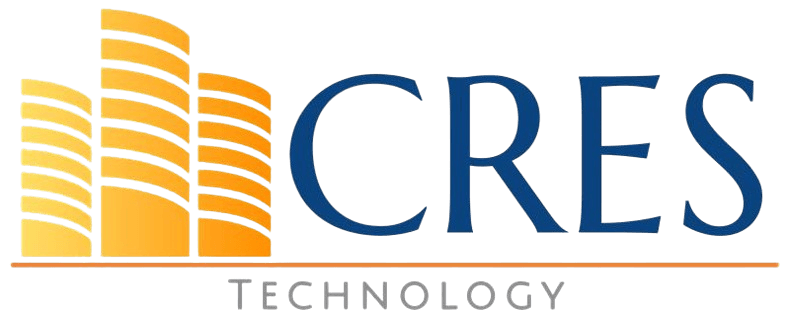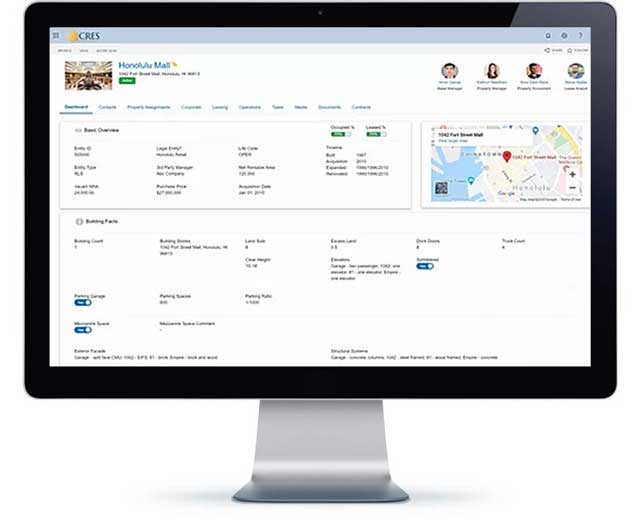
As a Real Estate Managed IT Services company, we know first hand that most real estate firms struggle with managing and reviewing the loads of data they deal with on a regular basis. Today, it is assumed more than 50 percent of real estate professionals use Microsoft Office 365 and SharePoint to store their non-real estate documents. CRES is our proprietary web-based real estate portfolio management solution built on Microsoft’s SharePoint platform. Providing a consolidated view of your data and documents, CRES manages business processes in an efficient way to boost productivity and increase visibility.
What is CRES?
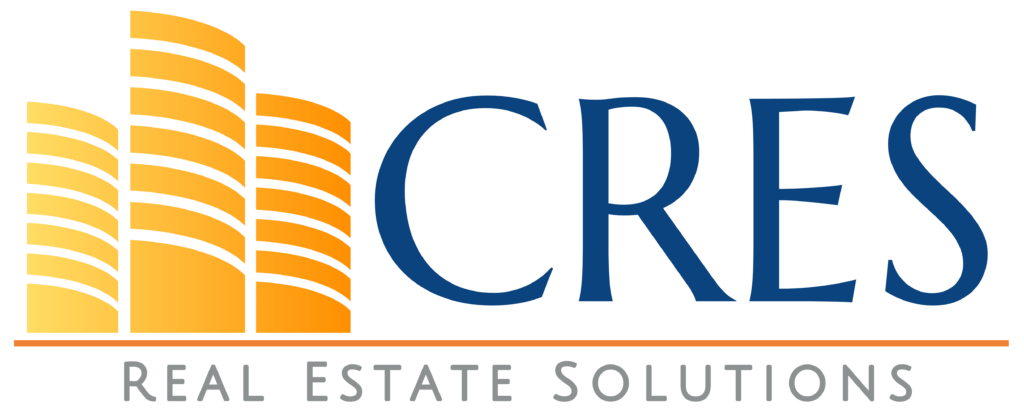
CRES is a robust suite of real estate solutions that consolidates data, documents, and business processes. CRES can be integrated with any real estate system such as MRI, Yardi, VTS, or RealPage. It includes document management, business process management, business intelligence, Real Estate & Corporate Contracts Management, and our latest Real Estate & Leasing Deals Management.
Intrigued? Let us take it one step further. Here are ten reasons why your commercial real estate company shouldn’t be working without CRES.
1. That sought-after Data Consolidation
Real estate organizations often need to capture critical information about their portfolio that doesn’t always have a place in source ERP systems like MRI or Yardi. This includes some specific property, tenant, loan, and legal entity data and the corresponding issues, disclosures, documents, and contacts. (Think property details: structural systems, foundation types, exterior facades, sprinkler systems; legal entity details like ownership interest and local and foreign jurisdiction; and tenant details like tenant issues and credit ratings.) CRES is geared specifically toward commercial real estate companies, allowing you to combine and organize your real estate data from different portfolios or systems into one easy-to-use, consolidated format. CRES also allows you to add new data elements easily, and present it in a consolidation with other data sources.
2. Contextual Document Management
If you’re still relying on file servers – or worst, paper – for storing your real estate documents, one of my favorite benefits of CRES is that you can finally tag documents to your data and go paperless, saving you time, money, and valuable real estate in the office.
Although Microsoft SharePoint has a great platform for document management, very few real estate organizations have figured out how best to use it, often just moving their network folders over to SharePoint as-is. CRES’ document management capabilities are based on SharePoint best practices. The benefits are incredible when you can house documents with their corresponding data. In CRES, all documents related to acquisitions, properties, leases, tenants, legal entities, and loans are maintained and categorized as needed. This is where CRES beats other commonly used document-sharing tools such as Dropbox, Box, ShareFile, or Google Docs, which do not offer the consolidated view of your real estate data with corresponding documents.
To take it a step further, we are also able to set up automatic document archival and destruction per your corporate compliance policies—another major benefit.
3. Superior Deal Management
Leasing deals, especially for retail, office, and industrial spaces are complex. They require participation of multiple departments to perform specific tasks—and coordination between them all. The abilities offered by CRES Deal Management help to avoid added frustrations and wasted time.
CRES can now automate Commercial and Residential Leasing Deals, as well as any property-related deals such as Acquisitions and Dispositions. This includes automated drafting of templated documents and assignment of predefined tasks to specific departments and individuals.
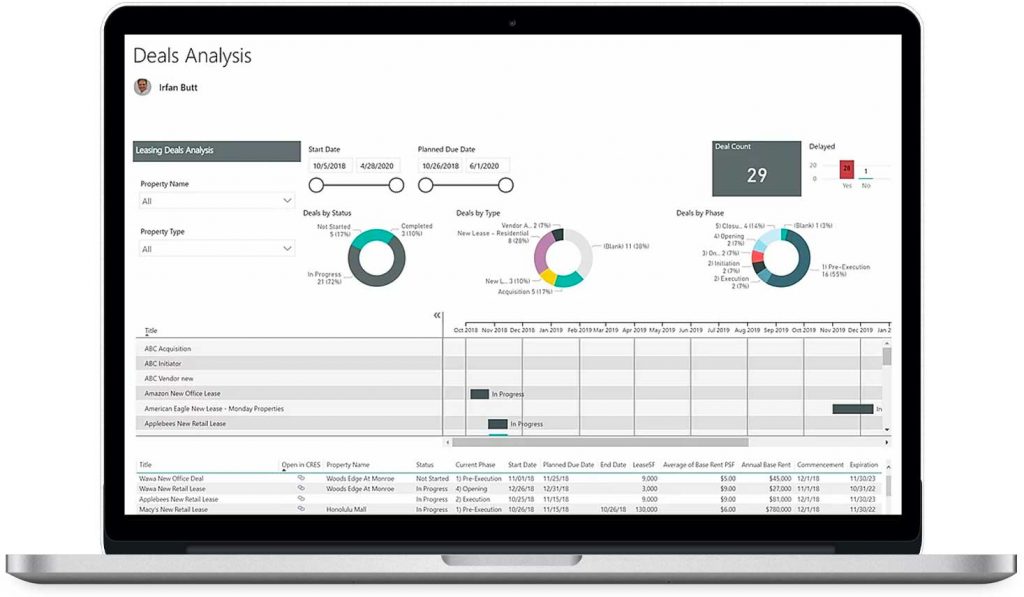
CRES’s centralized dashboard shows a deals pipeline. Any type of reusable deal plans can pre-define all tasks for each deal type your organization may have.
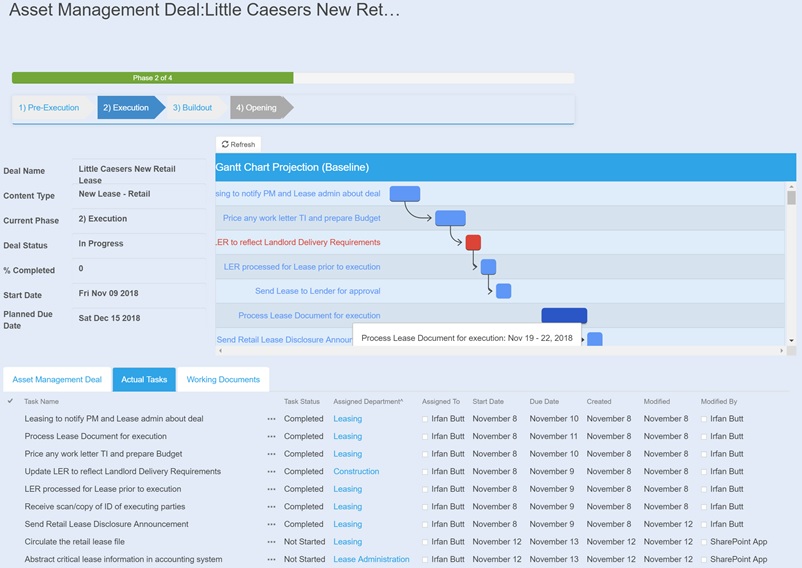
Once a deal is started, cascading tasks or approval requests are created based on pre-defined deal plan.
4. Corporate and Real Estate Contract Management
CRES now offers a Corporate and Real Estate Contract Management feature that can handle corporate contracts made for vendors, departments, and legal entities as well as real estate contracts related to properties, tenants, and loans.
This new robust feature will manage all critical dates related to real estate contracts as well as departmental/corporate contracts with tenants and vendors. Based on the parameters defined during contract upload, CRES will alert specific departments or individuals before the contract deadline, thus ensuring that nothing falls through the cracks and no deadlines are missed.
5. Integrated Contact Management System
One of the unique features of CRES is the built-in Contact Management System, fully integrated with Microsoft Outlook. You can drag and drop contacts from your personal or corporate contact lists to CRES External Contacts list or vice versa, and External Contacts can be linked to acquisitions, properties, tenants, and loans in CRES, and updated within CRES or via Outlook. This provides you the capability to review all relevant external contacts and their assignments to various roles on specific acquisitions, properties, tenants, and loans. Depending on your phone and email system, you may be able to click and initiate a call or email in context of CRES.
6. Interactive Business Intelligence Got Smarter
CRES provides real estate-specific executive dashboards and interactive business intelligence (BI) analysis capabilities. So here you might ask: “Why SharePoint? Why CRES? After all, BI dashboards are available in many ERP systems like Yardi or MRI.” CRES is especially perfect for instances when you have data in SharePoint that isn’t present in Yardi or MRI, but you want to see it all together. Yes, you can add custom tables and columns to Yardi or MRI, but why customize your ERP system, when we can add such data elements within CRES?
The other benefit is data consolidation by, let’s say, a parent company. Here’s a scenario: This company has multiple portfolios of properties and joint ventures, where the data is housed in different systems or database instances. The parent company is using MRI, two subsidiaries are using Yardi, and one joint venture is using a separate MRI on-premise instance, but you want to view them all together. CRES allows you the capability to pull all this data together—no matter the delivery format from the related companies. The major benefit here is that it allows all of the related companies to continue using their system of choice without disruption, while the parent company is able to consolidate the information it needs for ad hoc queries and BI analysis.
7. Mobility = Productivity
CRES can be accessed with commonly used mobile devices like iPhones or Android devices. You can access, review, add, edit and distribute CRES data and documents with your mobile device. This allows your field staff to become more productive and connected with the enterprise. Fully capable CRES is available via any commonly used tablets.
In addition, the Sync Capability allows you to maintain replica of your online document libraries, while you may be disconnected from internet.
8. Barcode Based Document Management
To further expand on the automation capabilities, CRES now has barcode management. So, for example, once a Word document is produced for a Property, Tenant, Loan, Department, or Legal Entity, a barcode can be automatically added to it. When the document is sent outside CRES and comes back in PDF or image format, the system recognizes it through the barcode and send it where it’s supposed to go, thus requiring hardly any effort from you.
9. Automated Security Management
Finally, CRES now has easy, automated creation of security groups and manages their access to lists, libraries, and folders. Based on our product focus group feedback, we saw how specific departments were tied to management of various business processes and thought, why not tie these same departments to specific security parameters and access control? For example, a property management department may only need to view certain documents, while it may need to edit others. CRES access control ensures property managers don’t tinker with documents they should not be editing, while allowing them appropriate access to the ones they are required to review and revise. As a plus, this feature ensures easier management of security for your company’s IT department.
10. Custom Features
Some real estate companies may have somewhat unique business requirements prompting the need for custom features and functions. CRES allows implementation of any of your unique business needs at a relatively low cost. In one instance, one of our clients wanted to get their tenants’ credit ratings data from Moody’s and S&P into CRES to make important decisions based on their findings. To accomplish this, we developed a custom program that converted the XML data imported from credit agencies and populated it in CRES. The next step was to set up alerts when any tenant’s credit rating dropped to dangerous levels.
Some projects or initiatives may require the quick setup of custom features for meeting-specific short-term business needs. At the same time, it may not be a good idea to customize your ERP system or add too many custom columns since it can be a headache when you upgrade your systems. Instead, CRES also allows you to painlessly meet these time-sensitive business requirements. For example, you might not have a place to capture data elements such as dock doors, truck courts, elevators, exterior facade, foundation, or mezzanine space in your buildings or information about the condition and repair status of your properties’ roofs. If you don’t want to customize your source ERP system with creating custom tables and columns, this is one way CRES really shines.
Let CRES do the work
You know that age-old saying, “Work smarter, not harder?” This couldn’t be more true with CRES. Now the only thing left for you to do is put that saying into action. Let CRES do the heavy lifting. You won’t regret it.
About Irfan Butt

CRES Technology – Founder and CEO
A strategic leader with more than twenty years of progressive experience in Business Administration, Finance, Product Development, and Project Management. Irfan has a proven track record with broad range of industries including hospitality, real estate, banking, finance, and management consulting.





